The Samsung Galaxy Tab S2 Review
by Brandon Chester on October 15, 2015 8:00 AM ESTDisplay Analysis
Before getting into our typical display analysis, I wanted to address a question that I'm sure some people have. A quick examination of a Tab S2 8.0's subpixel arrangement confirms that the smaller model uses a PenTile subpixel arrangement, and there's significant artifacting on the edges of icons and text, with the issue being very pronounced with thin weighted fonts. This is a big disappointment for users who prefer small tablets, and I would almost hesitate to recommend the smaller model for that reason alone because of how prevalent the issue is.
While the smaller model of the Tab S2 uses diamond PenTile, the Tab S2 9.7" does use an RGB-like subpixel arrangement, and it's essentially the same as the one used on the original Tab S 10.5. In practice there aren't really any artifacts as a result of the subpixels not being lined up exactly like a conventional LCD display, and it looks every bit as sharp as the iPad Air 2 which is exactly what I had hoped for.
To test the various attributes of the Tab S2 9.7's display I've run it through out standard display workflow. All measurements are done with an X-Rite i1Pro 2 spectrophotometer, and in the case of LCD devices the contrast measurements are done with an i1Display Pro colorimeter. SpectraCal's CalMAN 5 software is used for measuring and collecting data, and for generating graphs that are relatively easy to understand.
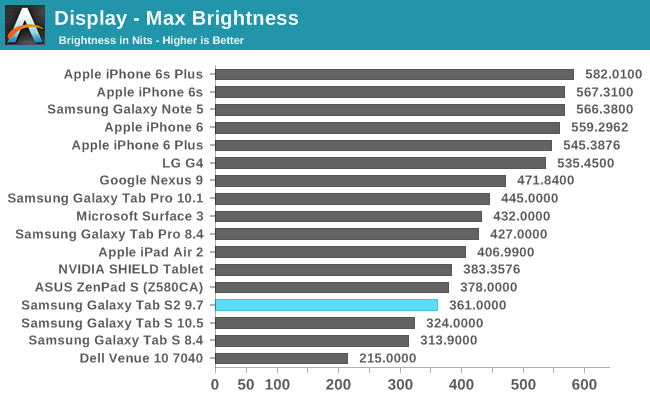
The Average Picture Level (APL) of an image can be thought of as a percentage expressing the luminance relative to a 100% white display. Since AMOLED displays target a given power consumption but can save power by turning off black pixels they can push a higher maximum brightness when the display's APL is low. Above you can see how the maximum brightness of white scales with average picture level. Real world use cases tend to be somewhere around 80% APL, and while there are always exceptions, this trend has continued with Google's new guidelines for designing Material Design applications. What's important about this chart is it shows that in most scenarios the Tab S2 9.7 actually isn't any dimmer than a tablet like the iPad Air 2, and much brighter than the original Tab S.
As for contrast, there's no point in displaying a chart, as Samsung's AMOLED displays can simply shut off pixels and achieve infinite contrast and true blacks. There's really nothing that comes close on any LCD-based tablet, and the true blacks of AMOLED displays simply become even more stunning as you scale up from a phone to a tablet, and again from a tablet to a television.
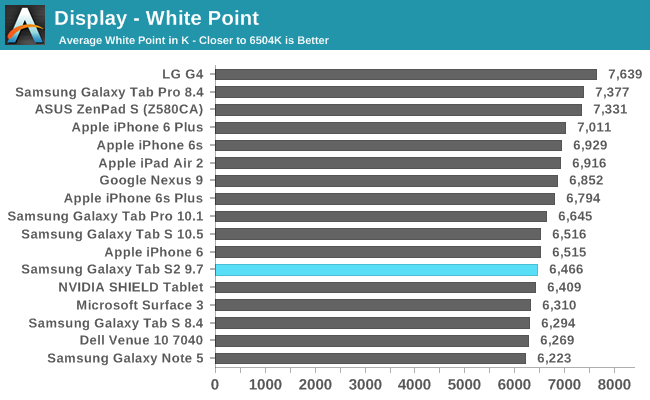
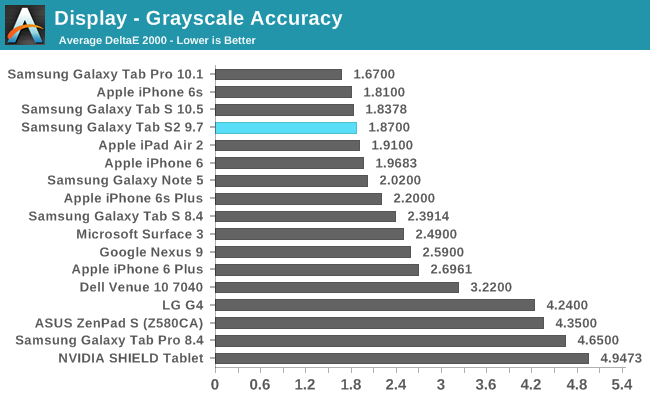
Samsung's AMOLED calibration has improved tremedously in recent years, and the Tab S2 9.7 is no exception. The greyscale has a very high level of accuracy, with very low errors across the board. When you move past 70% white there is a degree of green tinting to whites and greys that appears, and this is noticeable during general use. I did find it to be somewhat bothersome, but I think this is mostly due to the fact that I test and use many different devices regularly. If the Tab S2 9.7 was my only tablet I would be perfectly happy with the level of calibration, and I would get used to the good but not perfect calibration when shades approach 100% white.
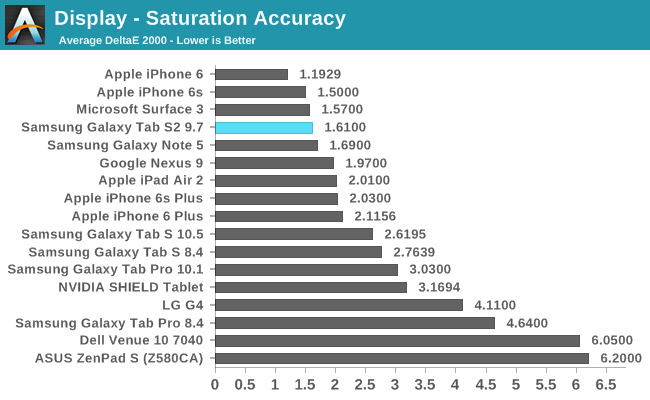
Saturation accuracy on the Tab S2 9.7 is phenomenal. It's better than every other tablet except for the Microsoft Surface 3, and at this point you would really be hard pressed to see errors in the rendering of pure primary and secondary colors. Most of the errors seem to be at the very extreme 100% saturations, and in daily use I never felt like the appearance of colors was off in any way.
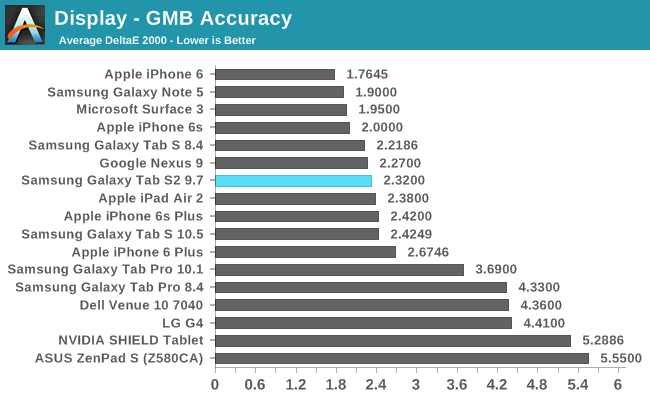
In the Gretag-Macbeth ColorChecker test we again see a very high level of color accuracy on the Tab S2 9.7. The biggest contribution to errors are actually the grey shades that are tested, along with some slight errors in red and blue based color mixtures. To criticize these results would honestly be pedantry, as unless your tablet workflow involves editing videos and photos with absolutely no visible color errors the Tab S2 9.7 provides a more than sufficient level of accuracy.
There's really not much else to say about the Tab S2 9.7's display. Samsung has really done a great job with calibrating the displays on recent AMOLED devices, and the Tab S2 9.7 offers a display that is just as good as any other tablet. One could argue that the true blacks actually put the Tab S2 9.7 ahead of the competition, and I would be inclined to agree. My only complaint is that the iPad Air 2 with its AR coating tends to be a bit more usable outside and in other scenarios where there are heavy reflections. There's really no way to conclude which tablet offers the absolute best display, but I think it would be correct to say that in most cases the Tab S2 9.7's display is as good, if not better than any other tablet on the market.


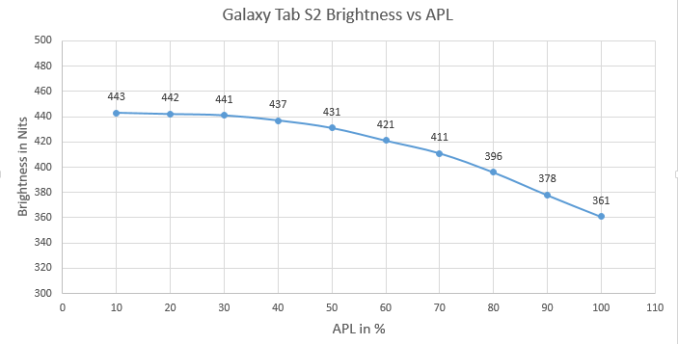
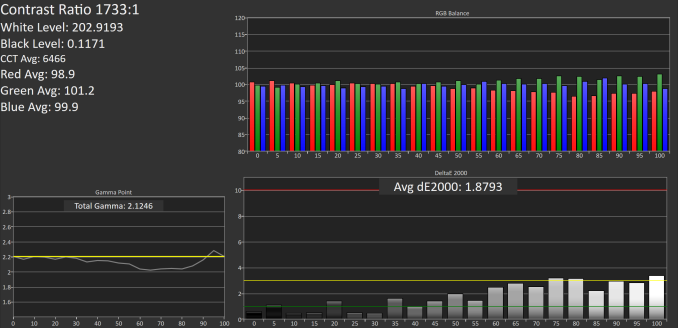

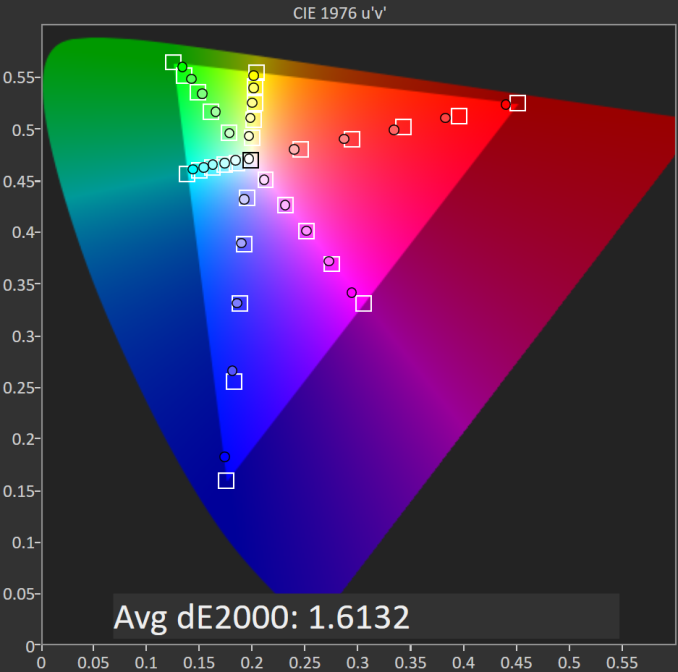










162 Comments
View All Comments
darkich - Saturday, October 17, 2015 - link
Brandon, there is a MAJOR omission in your take on the multitasking here..You missed the exact area where Samsung absolutely shines and sets itself far apart from any competition, in regards of multitasking, and that is WINDOW WITHIN WINDOW function.
Using multi window bubbles, user can use, move, open, resize and minimize multiple apps within each other, and they all remain FULLY DISPLAYED with no clipping and scaling issues whatsoever!
It really a complete, intuitive multitasking in the fullest sense of the meaning, unprecedented on tablets.
Here's what I mean:
http://tinypic.com/r/5ujuc7/8
Just made this screenshot on my Note 3(not even a tablet!), after opening Gmail, Play Store and the browser where I uploaded that image.
Oh and the keyboard remains fully usable throughout, taking its usual bottom half place.
So please, reconsider and revisit the software part of the review. This is a major deal, and the level of general public ignorance about it is obviously(since even you weren't aware of this feature) unacceptable.
Brandon Chester - Monday, October 19, 2015 - link
There no omission, it's mentioned in the software section, so I'm clearly not unaware of it. I didn't go over it in detail because the UX is no better than any of the other multitasking features and I already felt bad about criticizing Samsung for UX issues that they can't fix without control of the OS.darkich - Monday, October 19, 2015 - link
Well then, care to elaborate here under the radar, what's exactly wrong with Samsung’s multi window (and not the useless split screen function that you were describing)??As you can see I'm using multi windows on my small pocketable device and it works like a charm (except for hit and miss gesture that activates it), and on a big tablet screen that feature should absolutely be one of the highlights of usability.
darkich - Saturday, October 24, 2015 - link
Just like I thought.. You're left with NO ARGUMENT.Fact - Samsung’s multitasking in multi window mode is executed in amazing way (actually you don't even need to use the gesture, just tap on an app you want to add, after tapping on the plus window next to the app tray) yet you didn't knew lanything about it, and you *did not* mentioned it in the article.
nerd1 - Saturday, October 17, 2015 - link
One thing totally ignored in this review is that (non-american) cellular version of samsung tablets have full phone capability intact. That's the main reason I keep using samsung tablets, since OG galaxy tab 7". You save a lot of money just using one device for both phone and tablet, instead of buying two of them and using two separate plans.Achilles07 - Saturday, October 17, 2015 - link
It might be construed from the review that tab S2 is a slow performer given the lackluster performance figures in comparison to competition.On the contrary, I never felt the tab lagging in any applications during my daily work schedule with it. I use the MS powerpoint, and Word that came bundled with it. Not an issue at all. Opening up ppt with animations dragged a bit.
A tab of this functionality is a good companion for me in my office work and travel in metro.
I am not a gamer, so I cant comment on the gaming performance. But the real world performance as is as good as it can get for a tablet. For reference mine is the 8.0" LTE version.
KoolAidMan1 - Saturday, October 17, 2015 - link
Slower performance, poor security, no guarantee of OS updates, poor developer support and bad apps, and someone will still try and explain why Android is somehow the better platform.darkich - Sunday, October 18, 2015 - link
All Samsung high end product are basically guaranteed to receive updates for about two years.Android now has around 65% tablet market share, with a tendency of increase so that in the long term means developers will naturally have to support it.
As for other things, Android is vastly superior in terms of customization and third party apps - myriad of fantastic browsers (while iOS basically allows just a reskinned safari apps), media players, app managers, keyboards, widgets..
Also, Android allows full system access and file management which should be an absolute must on a tablet OS.
AND, you can connect peripherals (keyboard, mouse, USB) just as easily as you can with a Windows device.
Enlightened yet?
toyotabedzrock - Sunday, October 18, 2015 - link
Sounds like Google has lost interest in Android and Samsung thinks or rather isn't thinking about the need to compete with Apple by using a more well equipped SOC for the tablet and doing very little software wise.doggface - Sunday, October 18, 2015 - link
And Samsung just announced they are not going to update the software on this tab any further. In a statement the company said "3 weeks of updates are plenty" /s